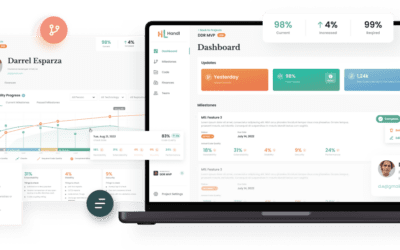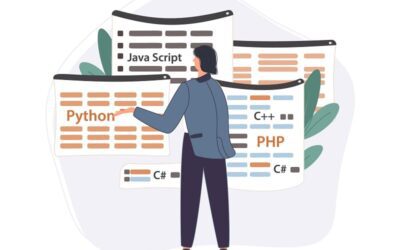Switch to Headless CMS
Platforms like WordPress and Drupal have been the go-to for years. They bundle design, content, and backend management into one system, often relying on predefined templates that restrict flexibility in how content is structured and presented.
It worked… until marketing got more complex.
Now, teams need to manage websites, apps, social media, and more—all while keeping things fast and seamless. Omnichannel content delivery has become key to providing a consistent experience across every platform.
That’s where traditional CMS starts falling short.
Enter Headless CMS.
By separating content from design, it gives marketing teams more flexibility, speed, and control. A headless CMS offers adaptability, scalability, and performance, making it a strategic choice for modern digital content strategies.
So what does that mean for you? In this article, we’ll cover:
✅ Why traditional CMS struggles with modern marketing demands
✅ How Headless CMS simplifies multi-channel marketing
✅ The impact on speed, security, and team efficiency
✅ A real-life example of a marketing team that made the switch
If you’re tired of tech bottlenecks and outdated systems, keep reading.
This might be the upgrade your team needs.
What is a Headless Content Management System?
A Headless CMS splits your content (the “stuff” you write) from how it looks (the “design”). Headless CMS architecture enables flexible content delivery by using APIs to distribute content seamlessly across various channels and devices.
Content is stored in the backend and sent out using APIs (like digital messengers) to any platform—your website, mobile apps, smart displays, and more—delivering content efficiently across multiple devices and channels.
This gives you freedom in how and where you use your content, without being stuck with one design. Headless CMSs support omnichannel content delivery and greater flexibility.
Why Traditional CMS Falls Short for Marketing Teams
1. Lack of flexibility
Traditional CMSs are built mainly for websites and often rely on predefined templates, restricting how you structure and present content. Today, marketing includes social media, mobile apps, email campaigns, and digital signage.
A Headless CMS lets you create content once and share it seamlessly across various channels and devices. No more copy-pasting or manual reformatting. Content is delivered via API to any digital channel, making omnichannel marketing easier and more efficient. The content is organized using a flexible content model, allowing you to tailor content for each platform without template limits.
Example: Launch a campaign on your website, mobile app, and social media simultaneously. With a traditional CMS, you’d update each platform separately. With a Headless CMS, update once and it appears everywhere.
2. Poor site performance
Speed matters. Slow websites cause higher bounce rates, fewer conversions, and poor SEO rankings.
Traditional CMS platforms often slow down due to heavy plugins, bulky themes, and large databases. A Headless CMS works with modern front-end frameworks, loads pages quickly, and requires fewer bug fixes and less maintenance.
Why this matters:
- Google ranks fast sites higher. Managing existing URLs and setting up proper redirects during migration preserves SEO rankings.
- Users prefer fast sites. A slow site hurts user experience.
After switching to a Headless CMS, track performance metrics like load times, user engagement, and analytics to monitor improvements and ensure optimal performance.
3. Security concerns
Security is crucial, especially for marketing teams handling customer data.
Traditional CMS platforms often rely on plugins and open-source code, making them vulnerable.
A Headless CMS separates content management from the front end, reducing risks with a smaller attack surface. Ongoing support is vital to maintain security and adapt to new threats. Strong integration capabilities allow a headless CMS to work seamlessly with security tools and other systems.
4. Developer bottlenecks and limited content control
Marketing teams often rely on developers for minor content updates.
Need to change a CTA button or update a landing page? You might need technical help.
A Headless CMS gives marketers and content managers more control. Teams can update content independently, experiment with campaigns faster, and react to trends in real time. Choosing the right headless CMS with a user-friendly interface is crucial to streamline workflows and reduce training time.
Headless CMS lets you define exactly what kind of information you have (like a blog post with title, author, and date) and how it fits together. This keeps things consistent and easier to manage across channels.
Real-Life Example
The Austin Board of Realtors (ABOR) struggled with a slow, outdated content system. Their marketing team had difficulty making quick updates. Switching to a Headless CMS allowed them to:
- Streamline content management
- Improve site performance
- Integrate key tools for better customer experience
A smooth migration was achieved by careful planning, keeping all stakeholders on the same page, and involving skilled developers throughout. They now launch campaigns without technical roadblocks.
5. Future-proofing and migration challenges
Technology moves fast. What works today may be outdated tomorrow as content demands evolve.
Headless CMS platforms are API-first, integrating easily with new technologies. When transitioning, plan to rebuild or adapt custom functionalities and workflows to fit the new architecture.
Headless CMS connects smoothly with marketing automation systems (like HubSpot), personalization software, e-commerce platforms (like Shopify), and analytics tools. This streamlines marketing processes and adapts to new needs.
Whether exploring voice search or AI-driven personalization, a Headless CMS keeps your marketing team ready for the future. Ongoing support ensures continuous adaptation and helps your team keep up with new systems.
Traditional CMSs don’t offer these benefits.
Understanding Headless Architecture
Headless architecture transforms content management in today’s rapidly evolving digital landscape. Unlike traditional CMSs, a headless CMS separates backend content management from the frontend presentation layer.
Content is managed and stored in one place, while the way it’s displayed—on websites, apps, or any digital platform—is handled separately by the frontend.
This separation gives development teams freedom to use any technology for presentation, making it easier to deliver content across multiple channels and devices. Whether targeting web, mobile, or smart devices, headless architecture enhances digital presence and adapts quickly to new trends. Adopting a headless CMS ensures your content management system is flexible, scalable, and ready to deliver wherever your audience is.
Content Strategy and Modeling in a Headless World
With a headless CMS, a solid content strategy and well-defined content models are essential. Since content is delivered across websites, apps, social media, and more, it must support a seamless user experience everywhere.
Start by understanding where and how your audience consumes content. Content modeling defines clear content types, metadata, and relationships between pieces. This helps your team manage content efficiently and maintain consistency across channels.
Careful planning and modeling streamline content creation and boost user engagement by ensuring content is relevant and accessible on any platform.
Migrating to a Headless CMS: What Marketers Need to Know
Moving to a headless CMS is a big step, but with meticulous planning, it can be a game-changer.
Unlike traditional systems, a headless CMS manages content independently from presentation, so content must be flexible to work across channels and devices.
Marketers should prepare for technical challenges during migration, such as data migration, integrating with existing systems, and ensuring a seamless user experience.
Approach migration with careful planning—map your content, understand its use in the new system, and collaborate closely with your development team to tackle technical hurdles.
Planning each step and focusing on content delivery and experience ensures a successful migration and unlocks your new headless CMS’s full potential.
Integrating with Existing Systems
A successful headless CMS migration requires seamless integration with existing systems, including legacy CMS platforms and essential tools like marketing automation and CRM software.
Plan your migration carefully—consider data transfer, API connections, and gathering user feedback to refine integration.
Ensuring your headless CMS works harmoniously with existing systems delivers consistent content across channels and provides users with a seamless, engaging experience.
Content Migration Best Practices
Content migration is pivotal in moving to a headless CMS. Following best practices makes a big difference.
Start by thoroughly assessing your existing content—identify what to migrate, archive, or update for the new system.
Ensure content is properly formatted and structured to fit your headless CMS, optimizing for multi-channel delivery.
Test and validate content during migration to confirm correct display and accuracy on every platform.
Careful planning and attention to detail set your team up for a successful migration, maximize user engagement, and provide a seamless experience across digital touchpoints.
Is a Headless CMS Right for Your Marketing Team?
Switching from an existing CMS to a Headless CMS isn’t for everyone. Evaluate your current setup—including content storage, custom features, plugins, and configuration.
A Headless CMS suits businesses that:
- Need scalable, multi-channel content strategies
- Prioritize website speed and performance
- Want more secure content management
- Require marketing teams to work independently from developers
- Aim to future-proof their digital presence
For teams managing high-traffic sites, global campaigns, and multiple content channels, a Headless CMS offers clear advantages. It gives marketers flexibility and control to create seamless, fast, and engaging digital experiences.
Final Thoughts
If your marketing team struggles with slow load times, security issues, or clunky content systems, a Headless CMS might be the upgrade you need.
Switching can feel like a big step, but the payoff includes faster performance, smoother workflows, and a system that grows with you.
Headless CMS solutions offer flexibility, scalability, and technical advantages for multi-channel content delivery, ideal for modern digital strategies.
The digital world isn’t slowing down—why should you?
After migration, ongoing support helps your team adapt and ensures smooth operations. Establish a feedback loop to collect user feedback and performance data for continuous improvement.
Get in touch with the team at Dazlab to discuss a CMS upgrade.




